Moto Z Force Droid vs Apple iPhone 6s Plus
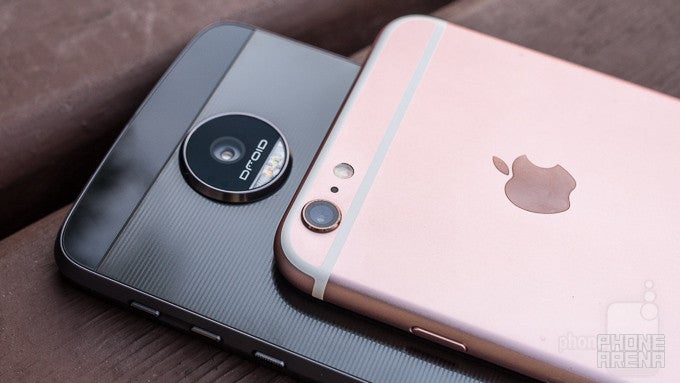
Introduction
Smartphone manufacturers are always looking to be among the first to bring users the next big thing. Sometimes those moves pay off, and things like the rise of phablet-sized devices, the return of fingerprint scanners, and support for fast charging have quickly entered the mainstream. Other times we get a swing-and-a-miss, and tech like autostereoscopic 3D displays fails to catch on in any appreciable fashion. Right now phone makers are once again trying something new, as smartphones built to take advantage of modular hardware add-ons appear on the market. And just a few days back, we took a look at the latest such system to debut, with Lenovo's Moto Z Droid, Moto Z Force Droid, and the Moto Mods getting ready to arrive.
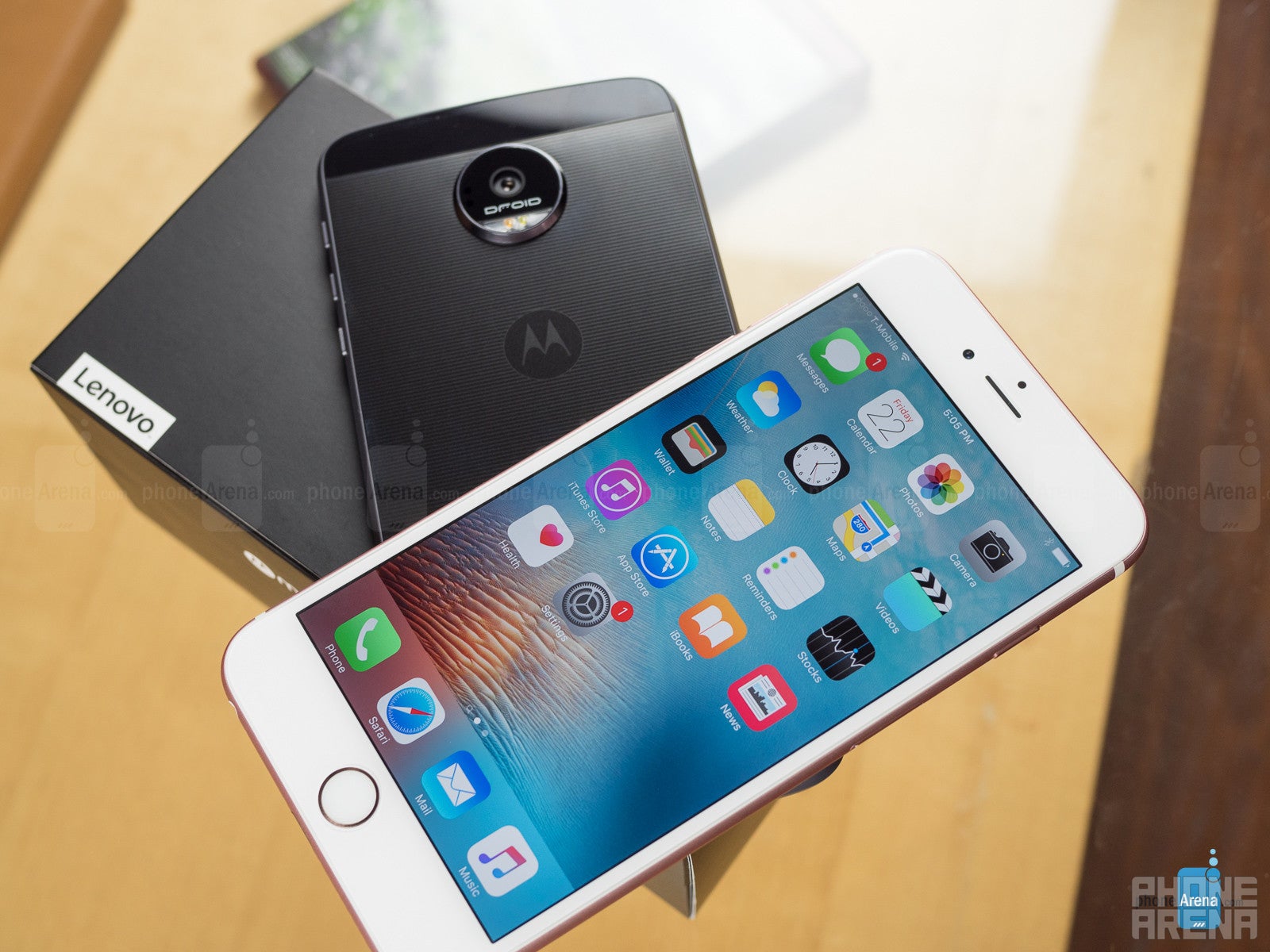
We've already looked at how the Moto Z Droid stacks up against the Moto Z Force Droid, but how does big brother there compare to other “upgraded” flagships? We've been taking a look at both the Moto Z Force Droid and the iPhone 6s Plus in the hopes of forming some conclusions.
Design
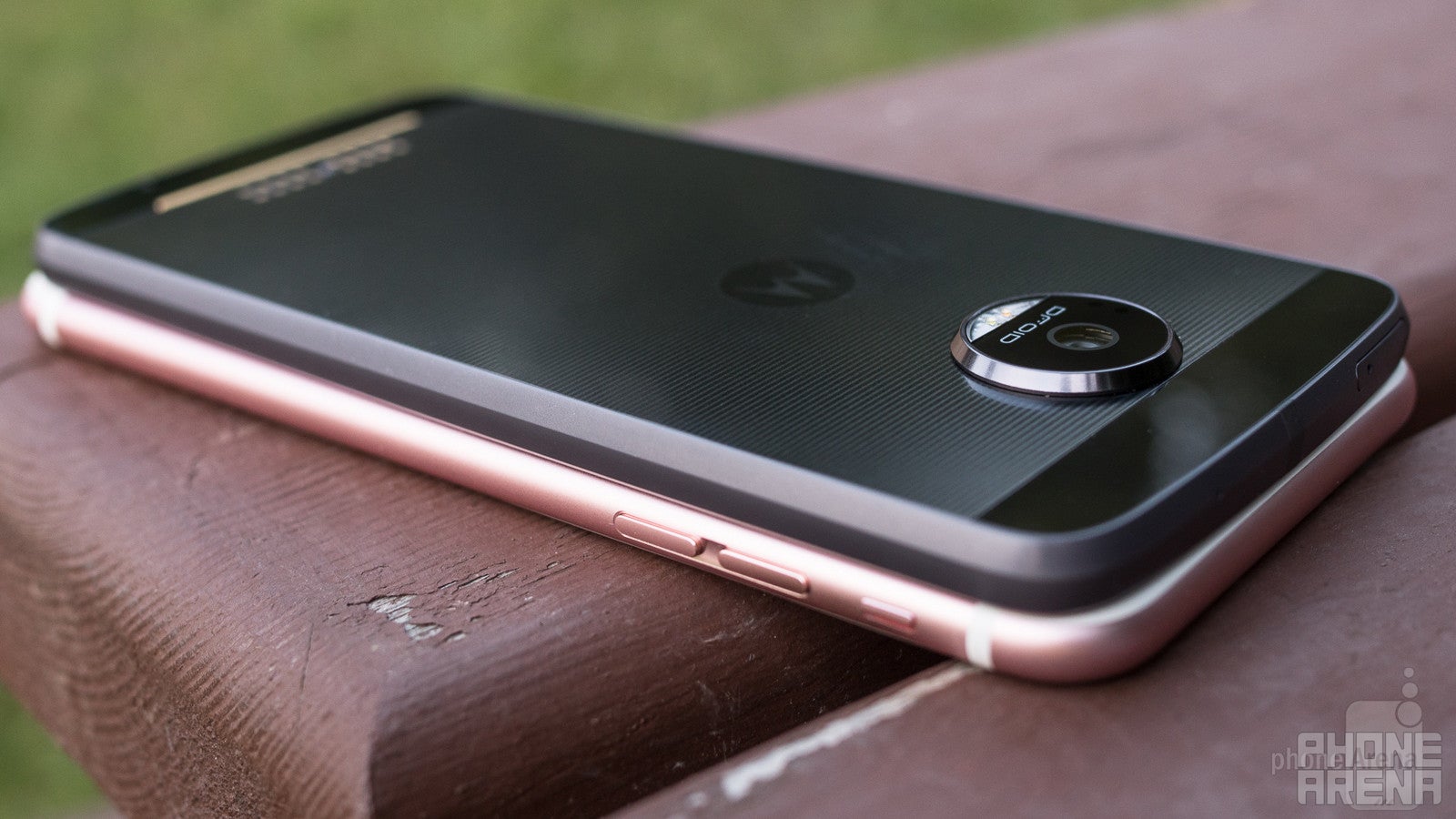
In a market where it's so easy to open criticism of a new smartphone with “that looks like it's ripping off the iPhone,” it's almost refreshing to see the extent to which the Moto Z Force Droid manages to stand on its own from a design perspective. Some choices, like its flat back panel bordered by a sharp drop-off around the edge, are clearly a consequence of Lenovo's move to implement Moto Mods. Others, like the way the edge strip includes a raised peak to help with grip quality, seem to take inspiration from elsewhere. But wherever all those pieces came from, they add up to giving the Moto Z Force Droid a distinguished, unmistakeable look that you're not likely to have come across before.
The iPhone 6s Plus, meanwhile, is the object of emulation more often than not, but nobody quite does it like the original. Apple's build quality is second to none, and even with a big 5.5-inch screen, the handset's still remarkably solid-feeling. Of course, that robust feeling comes at a price, and the iPhone 6s Plus is both taller, wider, and thicker than the Moto Z Force Droid, and also significantly heavier – to the tune of almost 20 percent.
Display

Both the iPhone and Moto handset are equipped with phablet-class 5.5-inch screens: Apple's using a 1080 x 1920 LCD panel, and Lenovo has a higher-res 1440 x 2560 AMOLED component. Those extra pixels don't result in a night-and-day difference in picture clarity between the two, but they do give the Moto Z Force Droid a slight edge in things like rendering really natural-looking text.
In terms of image reproduction, Apple's screen boasts slightly better color and grayscale accuracy, and can produce both brighter whites and darker blacks – that latter point is especially embarrassing for an OLED-based phone like the Moto Z Force Droid.
The 3D Touch force-sensitive input on the iPhone 6s Plus is a nice bonus feature, though it falls short of being a must-have. And the Moto phone picks up a special enhancement of its own, boasting the same ShatterShield impact-resistant construction as last year's Droid Turbo 2. While we certainly don't plan to go dropping our phones everyday, that's definitely a nice feature to have there when we need it.
Interface
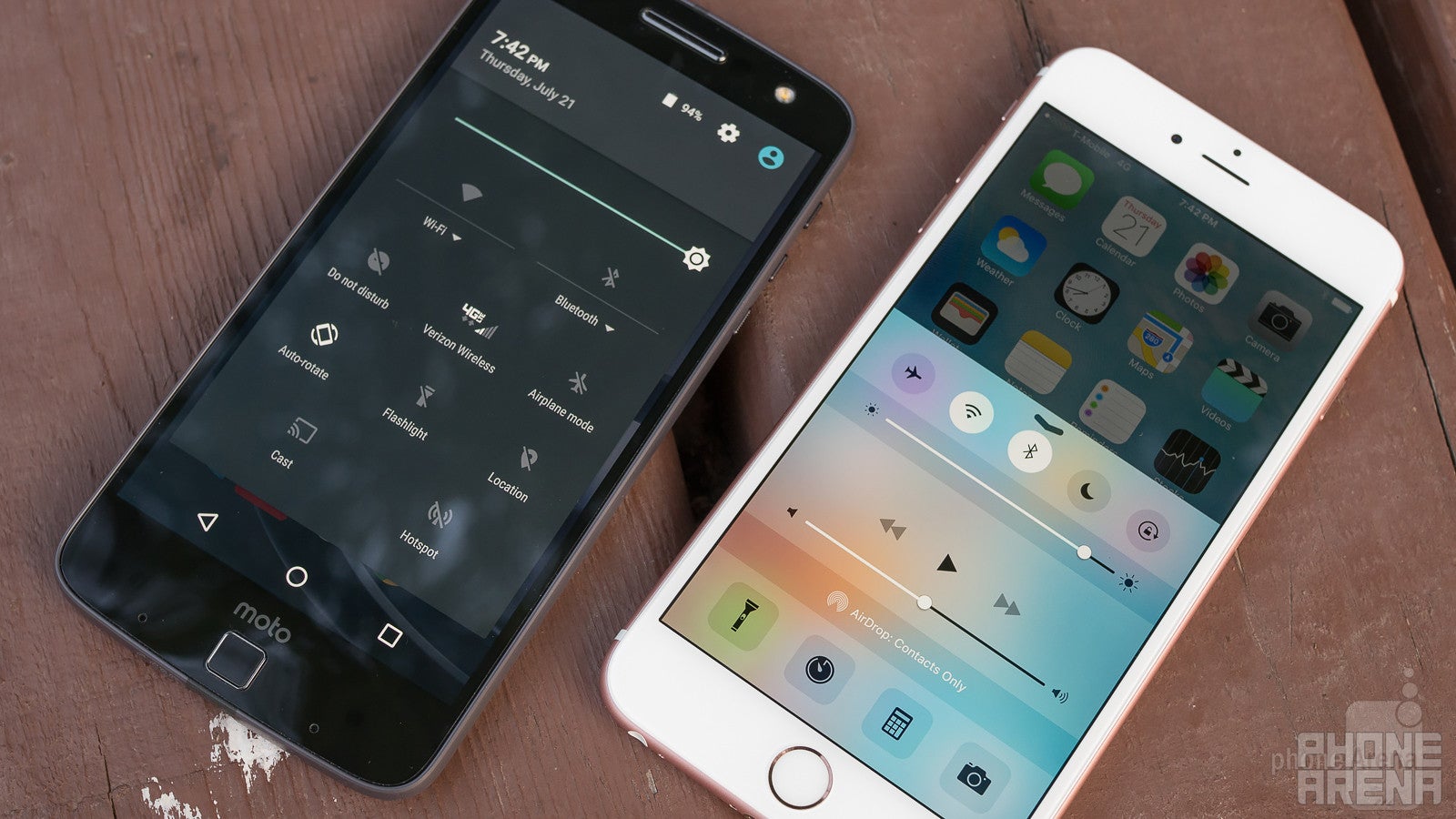
The differences between Android and iOS have been mused upon extensively already, and while they were once very different platforms, it feels like the gap between them has been getting narrower and narrower in recent years; Apple's been picking up a greater variety of user-customization options, while Android's been making headway on making sure users get a smooth, stutter-free UI.
That latter point's especially clear with the Moto Z Force Droid, whose Snapdragon 820 processor makes Android Marshmallow practically sing. The in-the-neighborhood-of-stock interface is helped out with tweaks like strong support for landscape mode and Motorola's full variety of gesture controls.
The iPhone 6s Plus, meanwhile, gets to enjoy the iOS interface enhancements made possible by the aforementioned 3D Touch support.
Processor and Memory
The Moto Z Force Droid isn't thinking too far outside the box when it comes to its silicon, and the combination of a Snapdragon 820 processor and 4GB of RAM might as well be called “the 2016 flagship special” by this point. And just as we'd hope, it offers the same kind of blazingly fast operation that this year's best phones have become known for.
The iPhone 6s is no slowpoke, either, and its A9 chip is sufficient to give the Snapdragon 820 a run for its money in our benchmarks. One phone pulls ahead of the other in one test, and the rankings swap places for another, leaving us with the impression that while these two handsets – and the chipsets that power them – may each offer their own specific benefits, by and large they're relatively evenly matched.
As far as storage is concerned, Verizon's only selling the Moto Z Force Droid in a single 32GB configuration. While that's a little limiting, the phone does support microSD expansion through its combined SIM/microSD tray, allowing users to seriously super-charge capacity. And though the iPhone 6s Plus lacks such expansion possibilities, the phone is available with much more internal storage, with capacities hitting 128GB.
Internet and connectivity
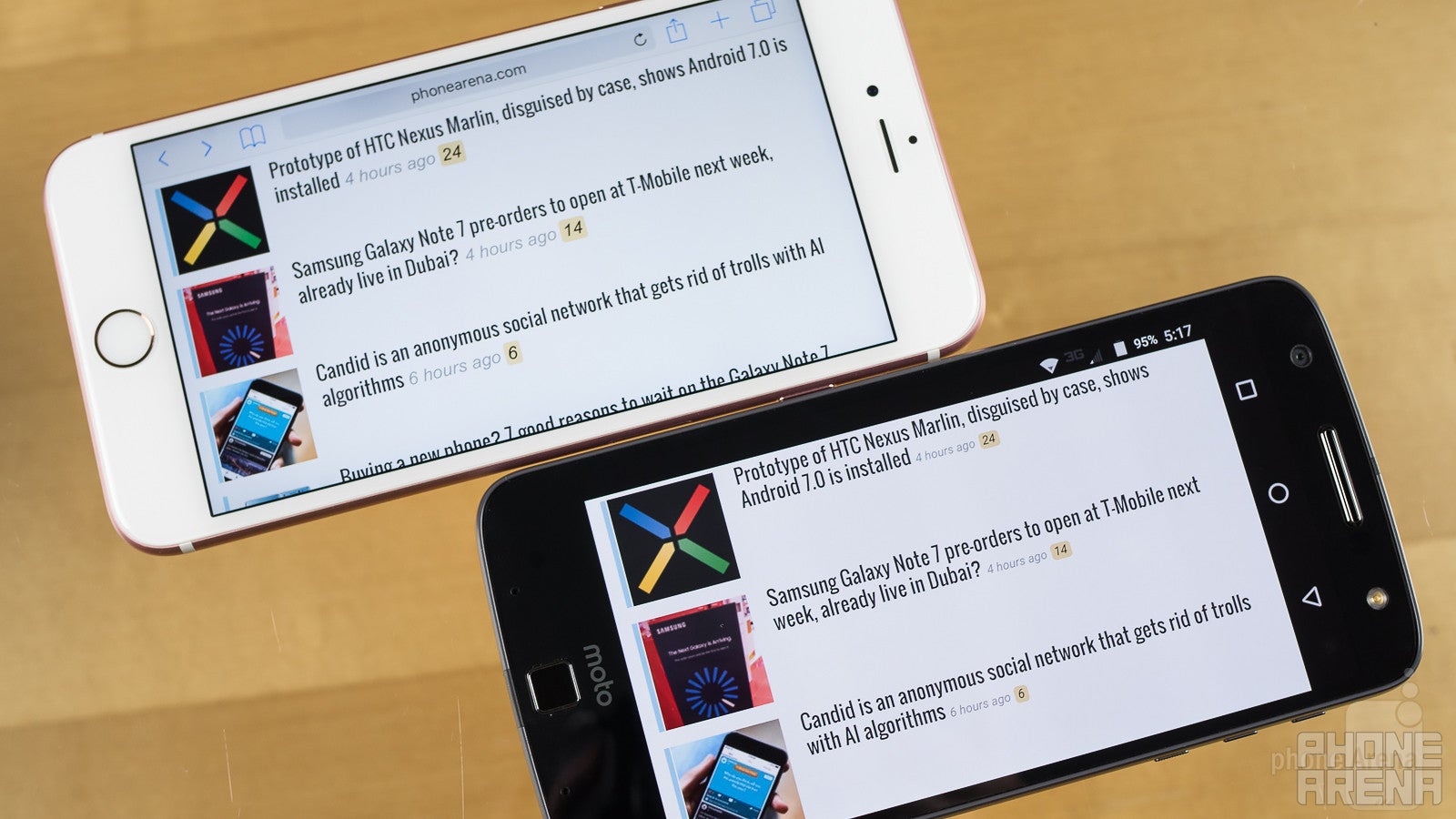
If you're not into operating a phone on Verizon's network, you're out of luck with the Z Force Droid. Apple's iPhone 6s Plus, meanwhile, is a whole lot more flexible in terms of whose network it operates on.
Both phones have a healthy assortment of wireless connectivity options, including Wi-Fi, Bluetooth, and even NFC, and both feature reversible connectors for wired data: Lightning on the iPhone and USB Type-C on the Moto.
Camera
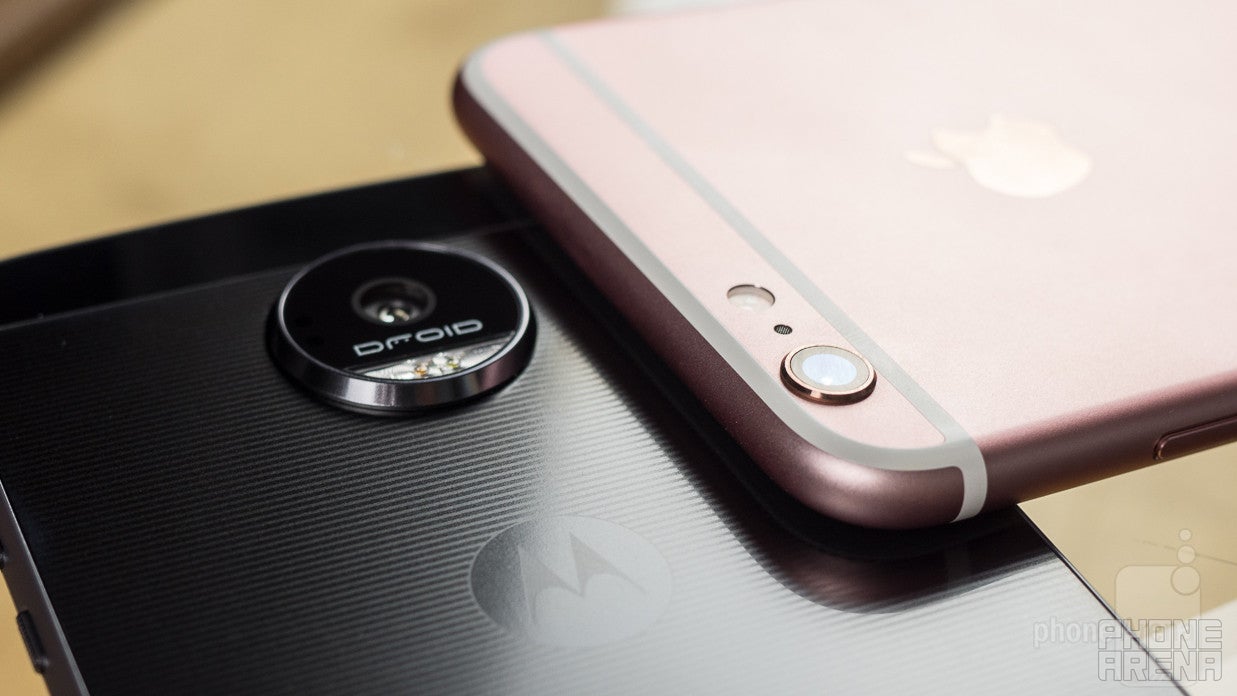
Each of these phones attempts to deliver camera upgrades over their lesser-equipped cousins. In the case of the iPhone 6s Plus, that means picking up optical stabilization.
The Moto Z Droid already supports optical image stabilization, and the Force model instead ups resolution from 13MP to a hefty 21MP, while also adding a phase-detection mode to the existing laser-assisted auto-focus.
Much like we've seen before when comparing Android cameras to Apple's, there's a clear tonal difference in the iPhone's pics. Exposures are more even-keeled, and saturation toned down. And while that makes it tempting to take a quick glance at photos produced by these two cameras and gravitate towards the bold, colorful images captured by the Moto Z Force Droid as more aesthetically pleasing, Apple's more balanced output has a whole lot going for it as well – arguably more.
What is clear is that despite having only a 12MP sensor, the iPhone 6s Plus is not hurting for resolution, and even upon zooming in its photos revealed detail comparable to the Moto Z Force Droid.
Of the two, the Moto has a wider field of view, with both its main camera and front facer. While that didn't matter much for regular pics, we really appreciated getting to see more of the subject in selfies – though just as it was with its main camera, Apple's front-facer delivers better exposure and color balance.
Both phones are capable of video recording up to 4K. Just like in still photos, the Moto's output is darker and higher-contrast than Apple's, and the camera's mic feels a little better at picking up audio than the iPhone's. But despite all its fancy auto-focus hardware, the Moto Z Force Droid struggles to reacquire focus after abrupt change of filming subject, while the iPhone 6s Plus handles the shift far more gracefully.
Multimedia
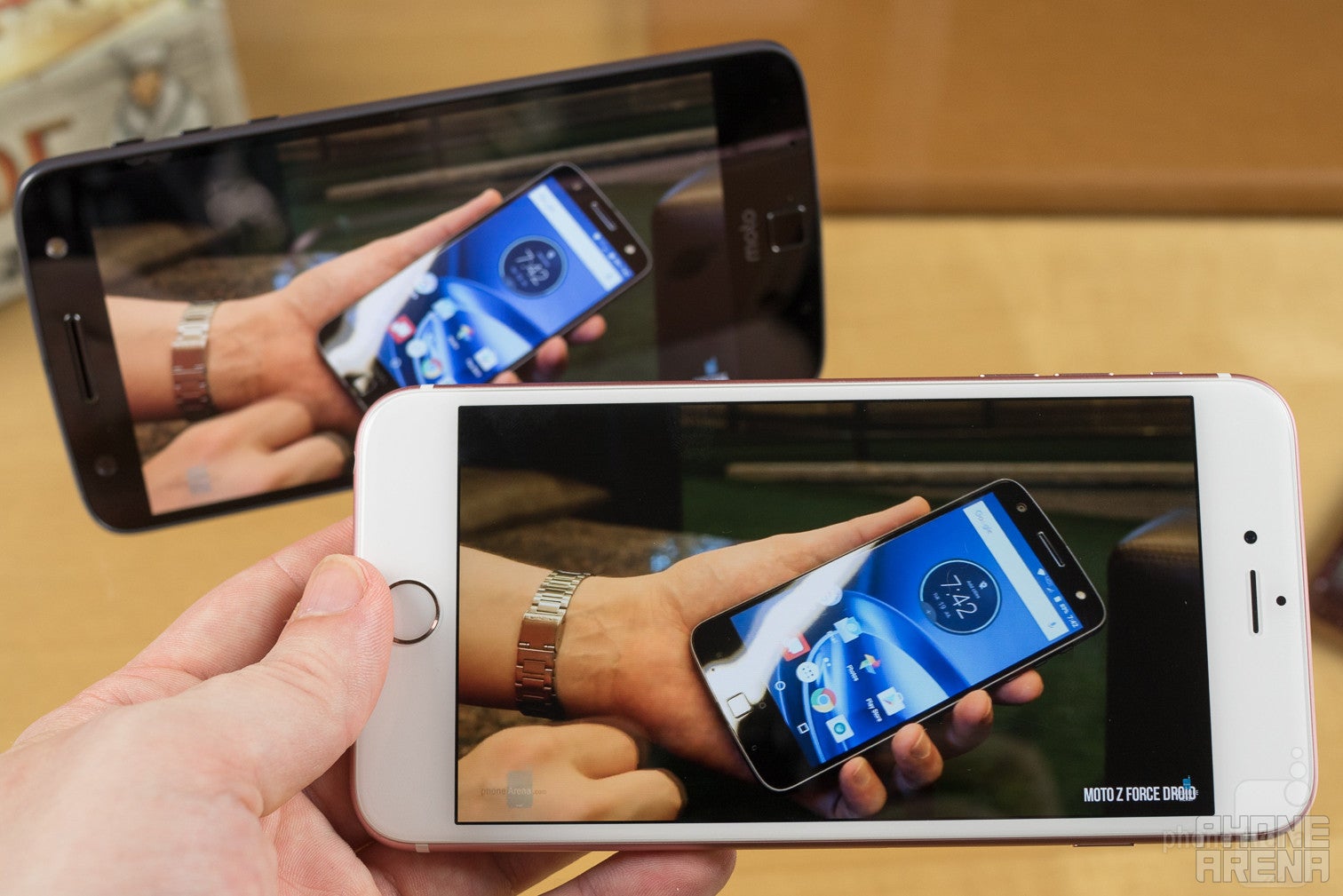
The Moto Z Force Droid's preference for stock Google apps means there's no special media player for the phone, driving us to focus more on the hardware comparison between the handsets. The Moto is equipped with a single front-facing speaker in its earpiece, while Apple returns to its bottom-edge placement.
The iPhone's audio sounds richer, with a better balance of frequencies than the Moto's, but listening to music on a smartphone is about more than just fidelity, and the Moto's front-facing speaker is positioned a lot better to effect easy listening of the media of your choice. It's also louder than Apple's.
While we're mostly talking about the Moto Z Force Droid itself in terms of how the phone measures up against the iPhone 6s Plus, this does feel like the perfect time to bring just a little bit of Moto Mods action into the mix: with support for the magnetic-attaching JBL SoundBoost, the Moto Z Force Droid can start sounding a lot better in just a few seconds, and the speaker's built-in kickstand also helps enhance video playback.
There's also that Moto Insta-Share projector for the Moto Z Force Droid, instantly turning it into a big-screen entertainment system. Issues with brightness and battery life (to say nothing of cost) mean you probably won't be watching with it all the time, but the Moto gets points for the simple availability of the option.
Call Quality
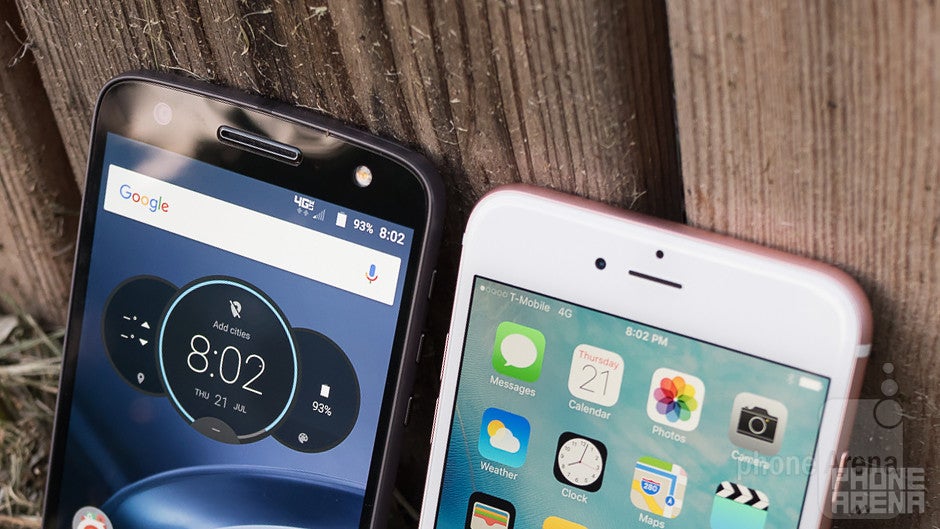
Both of these are two very advanced handsets, with support for all manner of advanced communication options – and yet time and time again, we find ourselves needing to make plain old telephone calls.
Neither model really disappoints, and while we'd have to say that audio quality on the Moto is a little crisper, it's also speckled with a few more rough edges – nothing so severe as to interfere with your call, nor really be heard unless you're listening for them, but the effect is that of a more “raw,” unrefined connection.
Both models support higher-quality voice-over-LTE calls, so long as the party you're calling also has access to the tech.
Battery
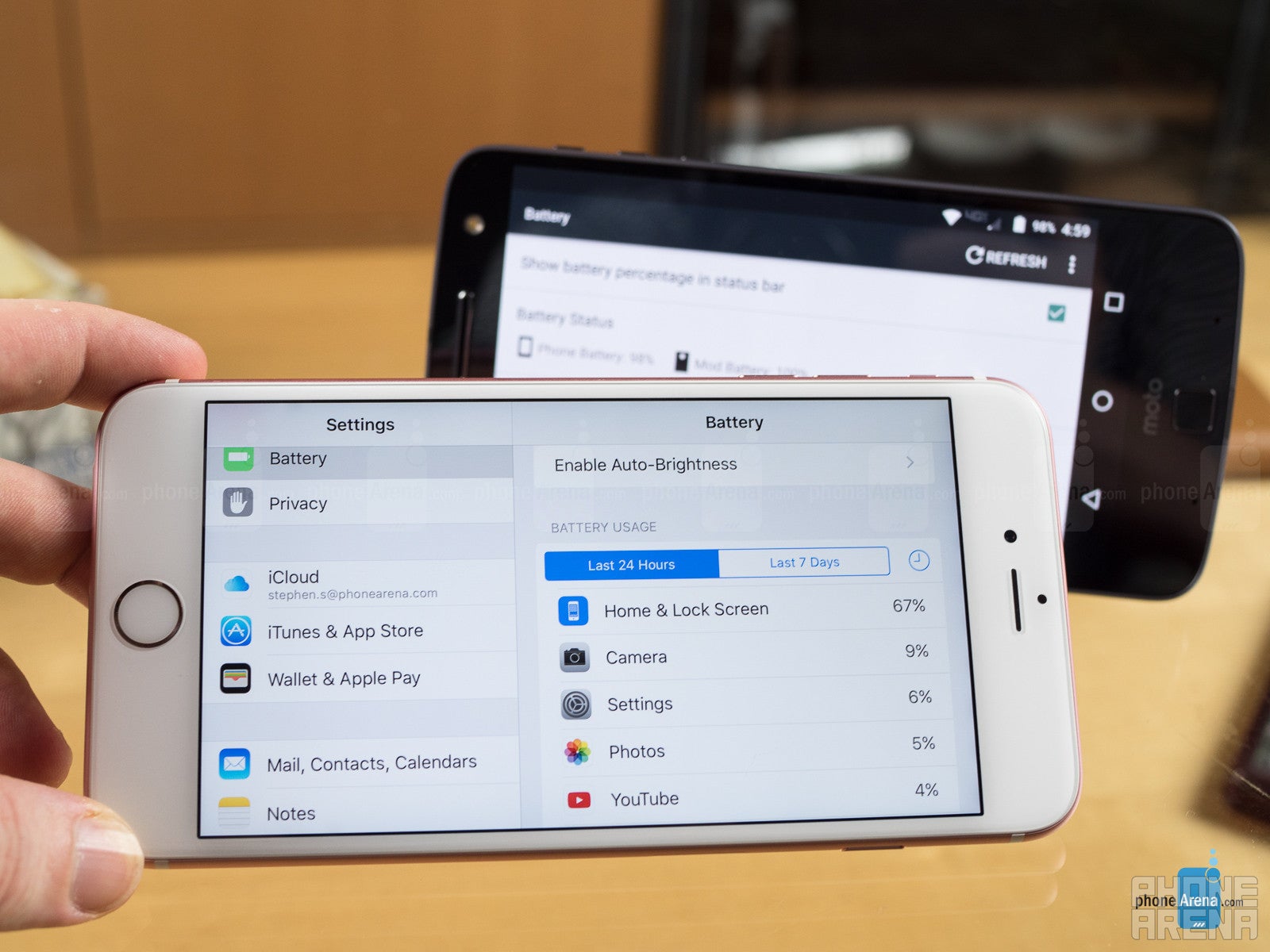
Blame Android, blame the higher-res quad-HD screen, blame the extra RAM: all we know for sure is that Apple's the big winner here when it comes to getting all-day life out of its phone.
That doesn't mean that the Moto Z Force Droid is necessarily a loser, though, and it does manage to score one important victory: it can reach a full charge in under two hours, while the iPhone takes closer to three. And if you don't need a fully-restored battery, the Moto's “Turbo Power” tech lets you add several hours of usable time (albeit not in continual operation) with just 15 minutes attached to the charger.
Conclusion
Whether you're looking at the Apple iPhone 6s Plus or the Moto Z Force Droid, both these phones offer some tangible benefits over the iPhone 6s and Moto Z Droid, respectively. Those benefits don't come without trade-offs, though, and from added expense, to increased size (though we suppose that could be a plus, depending on your preferences), there are a number of factors that might drive potential shoppers to their sibling-phones.
Those upgrades themselves are a mix of successes and failures: the Moto Z Force Droid definitely does have a battery that lasts longer than the Moto Z Droid, but given its sheer size, we'd really have hoped to see it last even longer still. And while the iPhone 6s Plus's camera does score optical stabilization, it's not so big an upgrade as to drive iPhone 6s owners to jealousy.
The even more difficult comparison is the direct one between these two handsets, as they're so very, very different: the iPhone 6s Plus is a phone about style, refinement, and quiet performance. The Moto Z Force Droid is far less reserved, with aggressive styling, a prominent camera bump that practically screams “look at me,” and an emphasis on durability.
And we can't talk about the Moto Z Force Droid without considering its role as a modular smartphone, supporting the new family of Moto Mods accessories. Those have the potential to add a lot of functionality and really stretch what's possible with the phone – though right now you'd be betting a lot on that potential being realized. Apple, meanwhile, already has a rich ecosystem of first and third-party accessories – even if their integration isn't quite as seamless as it is with snap-on Moto Mods.
If battery life and style are your big concerns, go with the Apple. If you absolutely have to try some of this modular hardware action for yourself, the Moto is the easy choice. But no matter which of these phones you choose, you're not likely to be let down – they both represent handsets near the top of their fields.
Moto Z Force Droid
Pros
- Impressively thin and pocketable
- Fast-charging support helps make up for battery life issues
- Moto Mods ecosystem adds whole new dimension of hardware expansion
Apple iPhone 6s Plus
Pros
- Exceptionally well-executed hardware is still challenging new flagships ten months later
- Battery life is surprisingly strong
- Camera produces incredibly detailed pics, even compared to higher-res sensors

Follow us on Google News

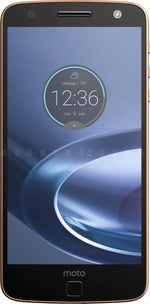













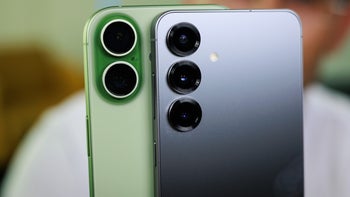


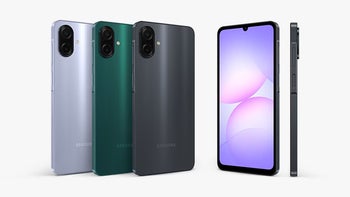

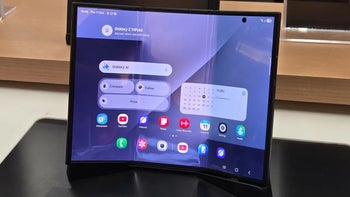
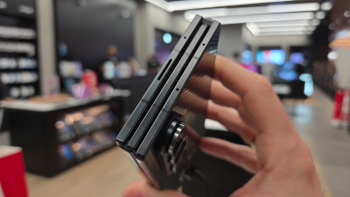
Things that are NOT allowed:
To help keep our community safe and free from spam, we apply temporary limits to newly created accounts: